The Half Square Triangle
The half square triangle (HST) is a versatile piecing method that forms to create so many quilt blocks. We’ll explore several easy blocks using the half square triangle to close out National Quilting Month. Choose your favorite and make a table runner with pretty quilting.
HALF SQUARE TRIANGLE FAQS
What is a half-square triangle? It’s a square quilt block made of two triangles, pieced along the long triangle edge. This edge is cut on the bias, making it a bit stretchy and unwieldy to sew. It’s easiest to sew two at a time from two fabric squares, and then cut after sewing is complete.
How many quilt blocks can you make using HSTs (half square triangles)? So many quilt blocks are formed using half square triangle blocks. Here is a small sampling of simple blocks made from HSTs:
PINWHEEL BLOCK
FLYING GEESE
BOWTIE/HOURGLASS OR “X” SQUARE
SQUARE IN A SQUARE
SEWING HSTs
Create all sorts of different quilt blocks simply by turning the direction of the HST units. These mini blocks combine to make much more intricate blocks, too. But the foundation is the HST unit.
How do you sew a half square triangle block? First, determine the desired finished block size and add â…ž” to determine the square sizes to cut. Each fabric square pair will create two HSTs. Here is a chart for easy reference to get you started. To create HSTs larger than 4 ½”, shown below, simply add â…ž” to the square size.
Now, cut two fabric squares to the determined size. The featured fabric squares are 4â…ž”, so they combine to create two half square triangles measuring 4″ after sewing.
To begin, place the fabric squares right sides together on a flat work surface, aligning all corners and edges. Using a fabric marking pen, draw a line from one corner to the other to divide the upper fabric square into two right triangles. Then, mark a line ¼” from the centerline on both sides. (A quarter-inch ruler is great for this step.)
Next, sew along the outer marked lines from the same direction. Note: in the image below, there is no marked centerline because a specialty ruler was used that eliminated this step.
Then, use a rotary cutter and self-healing cutting mat to slice down the centerline (if using) or along the center of both seamlines from corner to corner.
Then, press the seams toward the darker fabric.
Next, trim the blocks, and then arrange as desired.
HALF SQUARE TRIANGLE TABLE RUNNER
Use the half- square triangle blocks to create a pretty table runner, accented with fun quilting. This table runner consists of three rows of ten blocks. It measures approximately 12 ¼” x 31″. Table runners can really be any length, so determine the size you desire for your table and proceed with arranging half-square triangle blocks to create a pleasing design.
For the featured table runner, the blocks are arranged simply to highlight the half-square triangle block.
After sewing the blocks together, create a quilt sandwich with the backing fabric wrong side up, batting, and then quilt top right side up. THen, secure the layers with Sulky KK 2000 Temporary Spray Adhesive.
The featured table runner was pieced with Sulky 50 wt. Cotton Thread. This lightweight thread is great for less bulky intersecting seams. It’s also nice for quilting, when you want the quilting stitches to blend in with the fabric and be almost undetectable.
However, for this quilting to stand out and add more color to the finished piece, we’re using 30 wt. Cotton Blendables®. This thread is heavier weight and sits atop the quilt surface to showcase the stitching. Plus, it is randomly dyed every 2½” to 5″ across the thread length. So, there are no repeating patterns in each subsequent row of stitching. The thread literally BLENDS to create an almost watercolor effect.
Next, quilt the half square triangle table runner as desired. The featured table runner was quilted with a wavy serpentine stitch on the sewing machine, every ¼” to ½” across the piece, diagonally to match the diagonal seams of the HSTs. The stitch length was very small to mimic the look of a bead stitch. Sulky 50 wt. Cotton Thread was used in the bobbin, in a color that matched the backing fabric.
FINISHING
When the quilting is complete, trim the table runner so all edges are even. Be careful to not trim off the corner points of any of the blocks.
Lastly, bind the table runner in the manner of your choice.
Now, experiment with different simple table runner designs, simply by changing the direction of half square triangle blocks! These table runners make great gifts and are good scrap-buster projects. After scrap hunting, combine all sorts of different fabrics to create different looks.

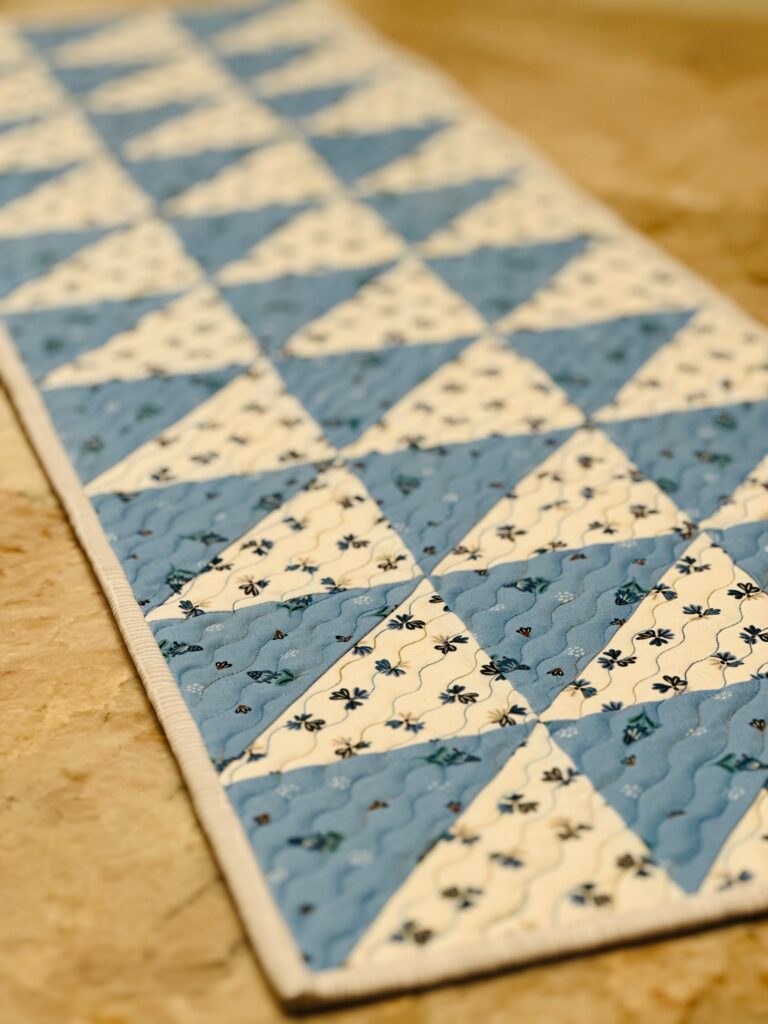
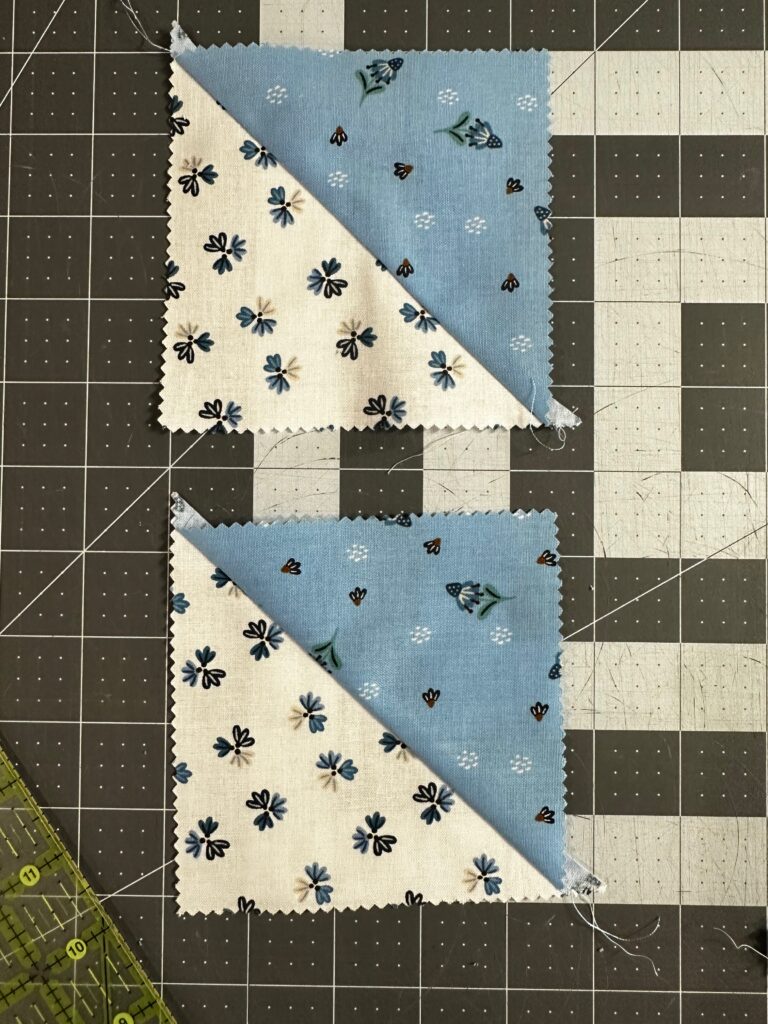
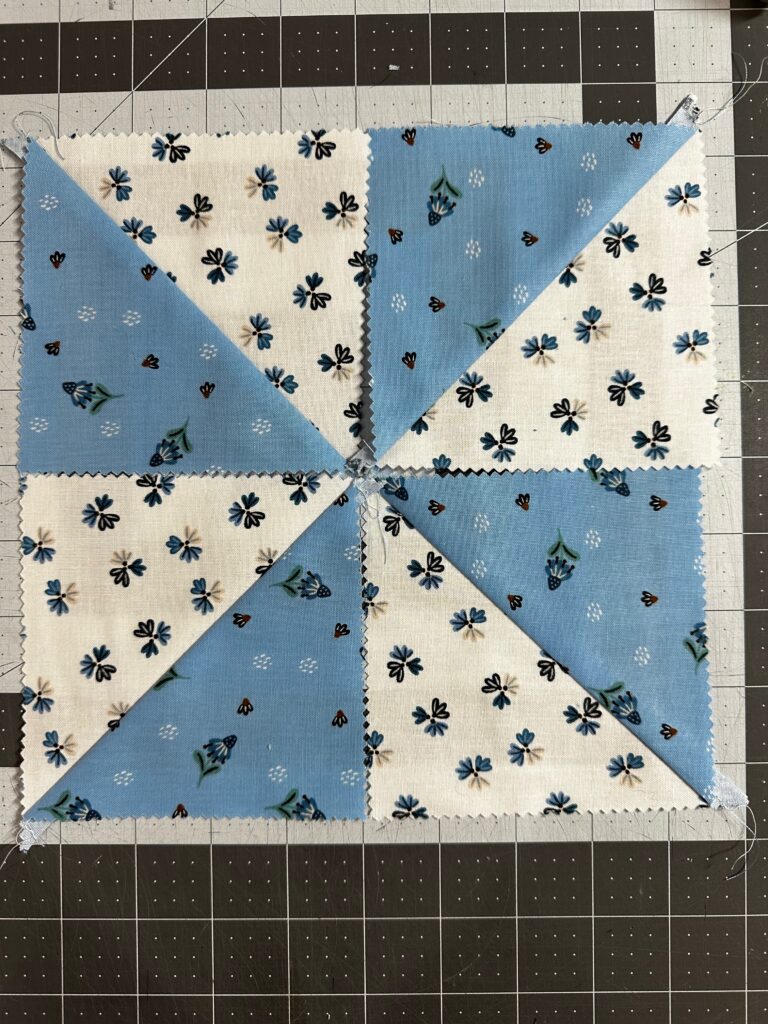
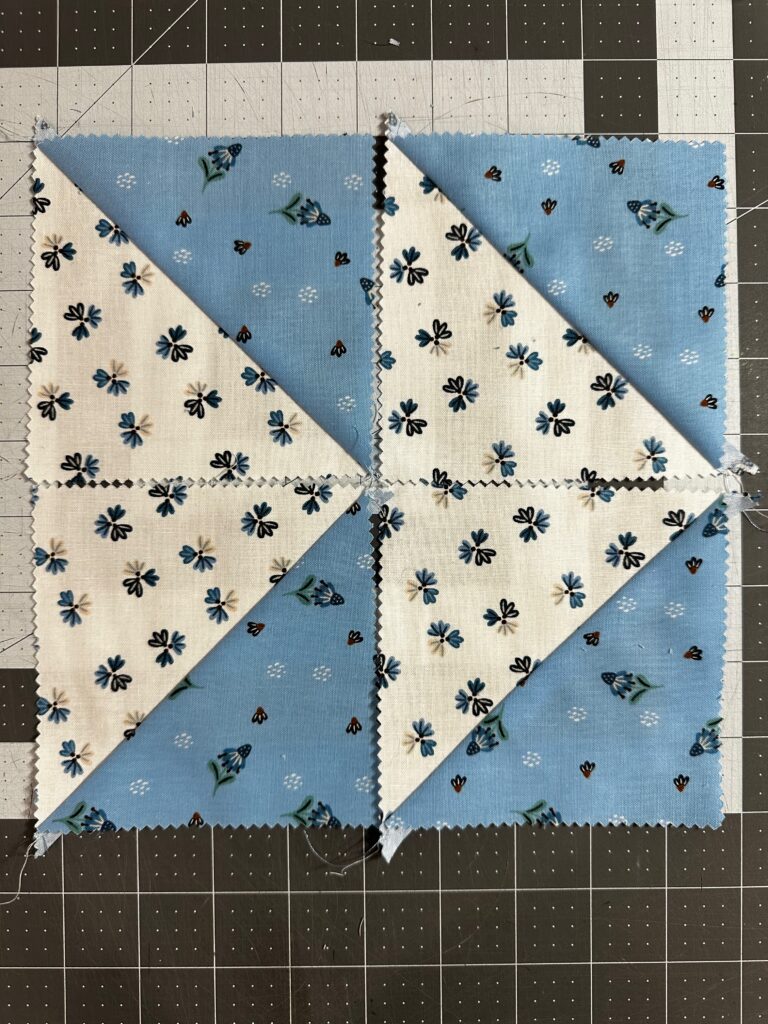
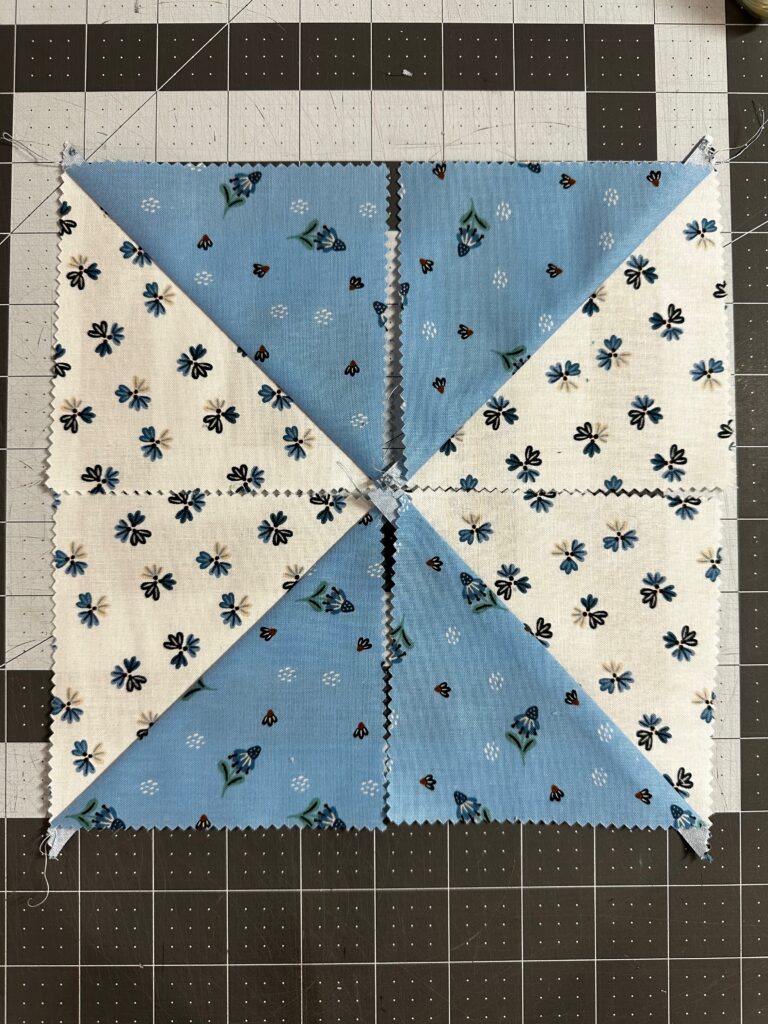
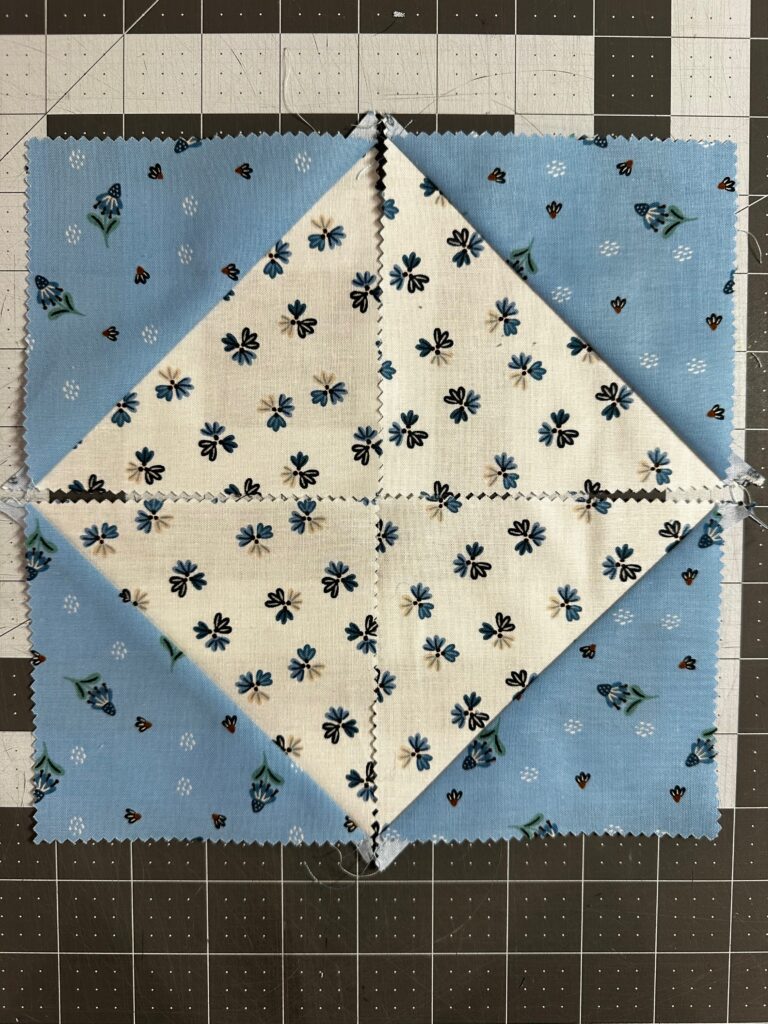
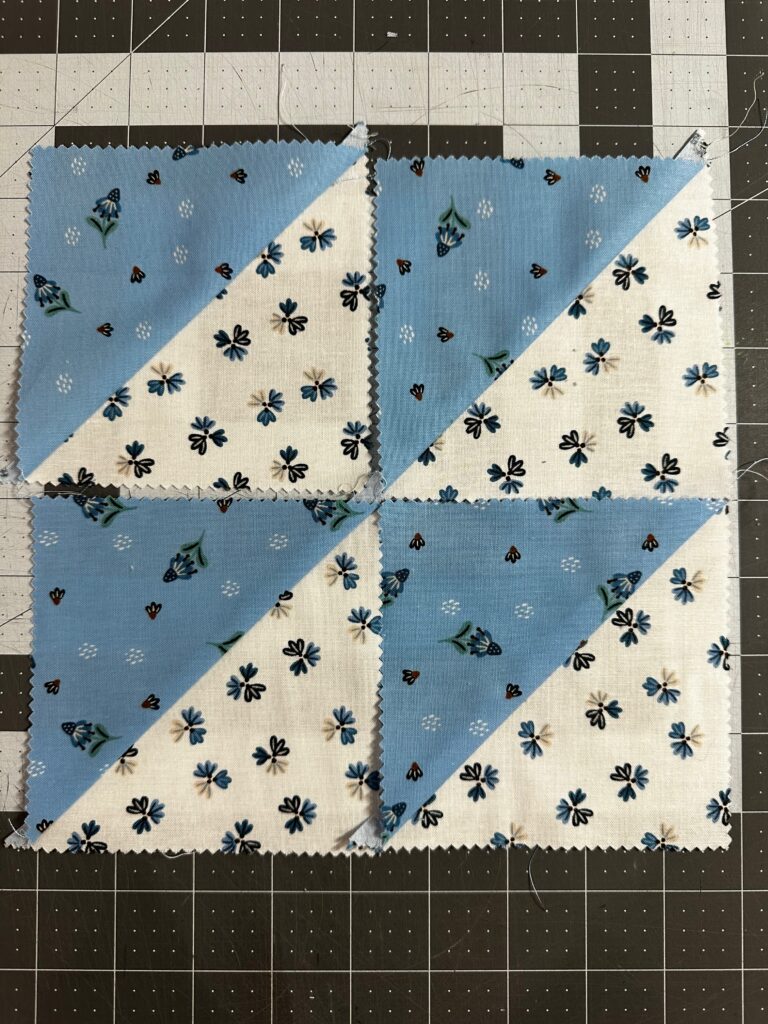
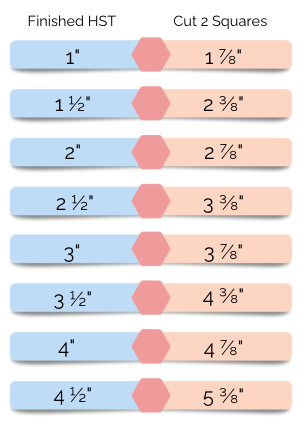
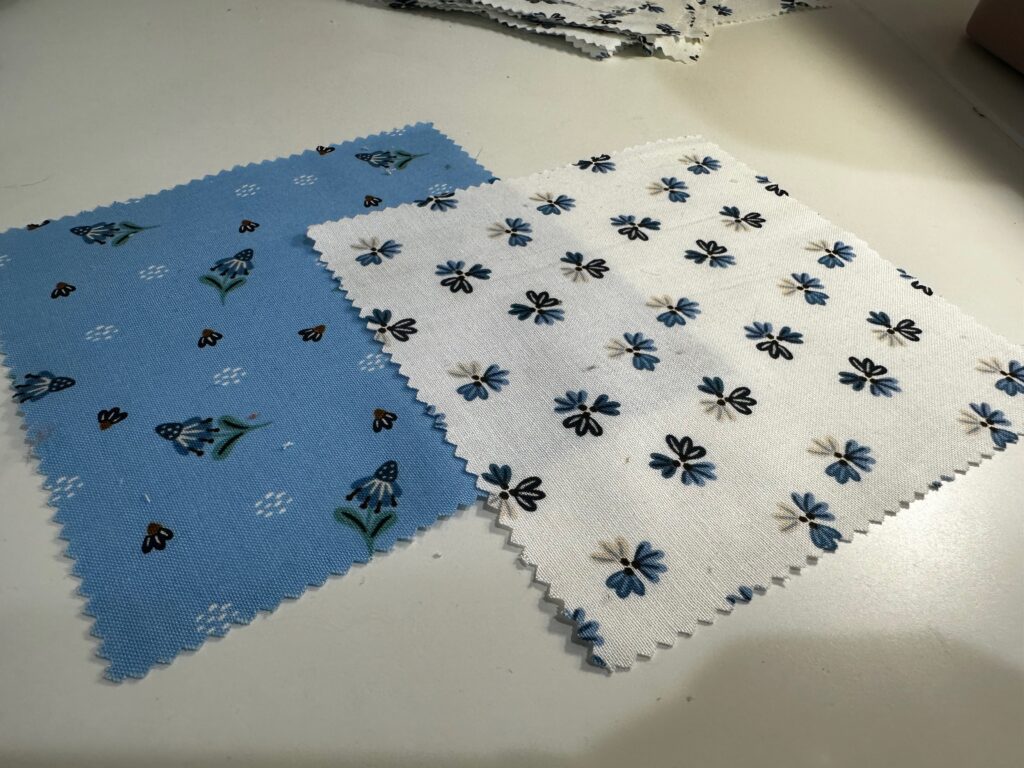
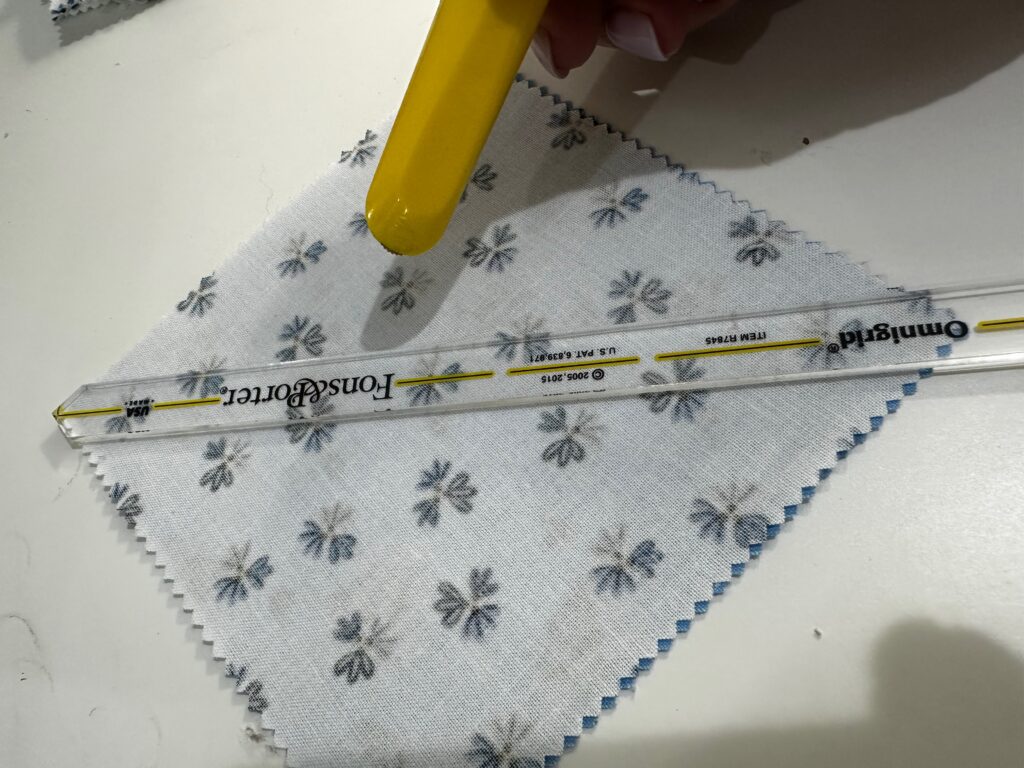
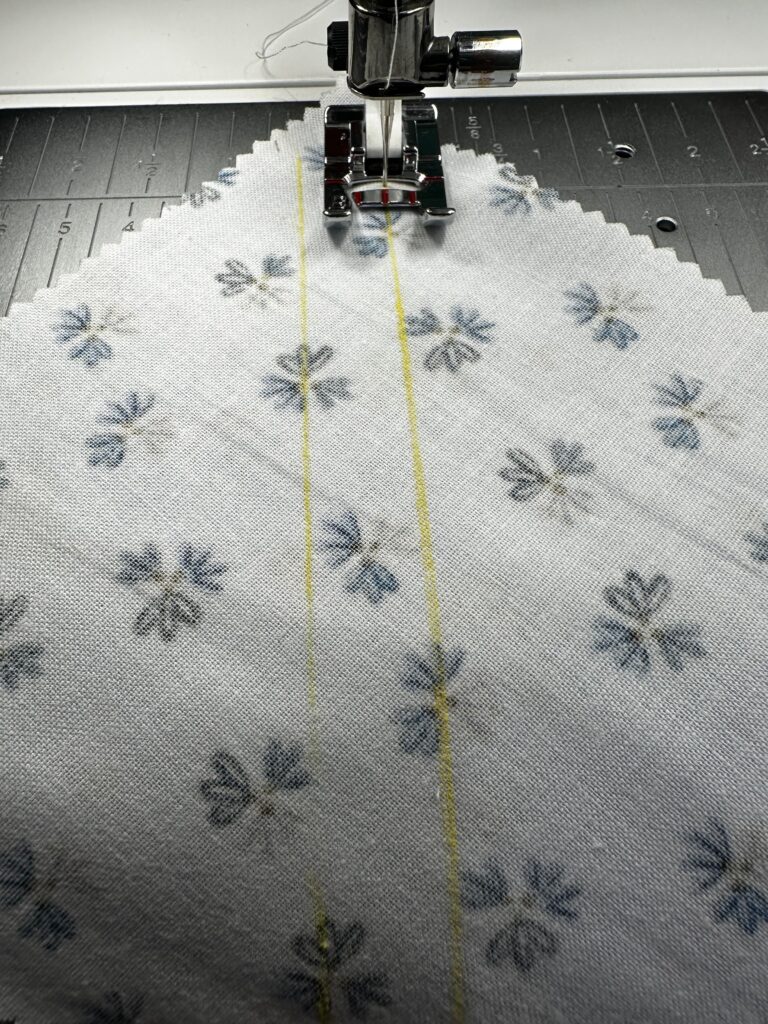
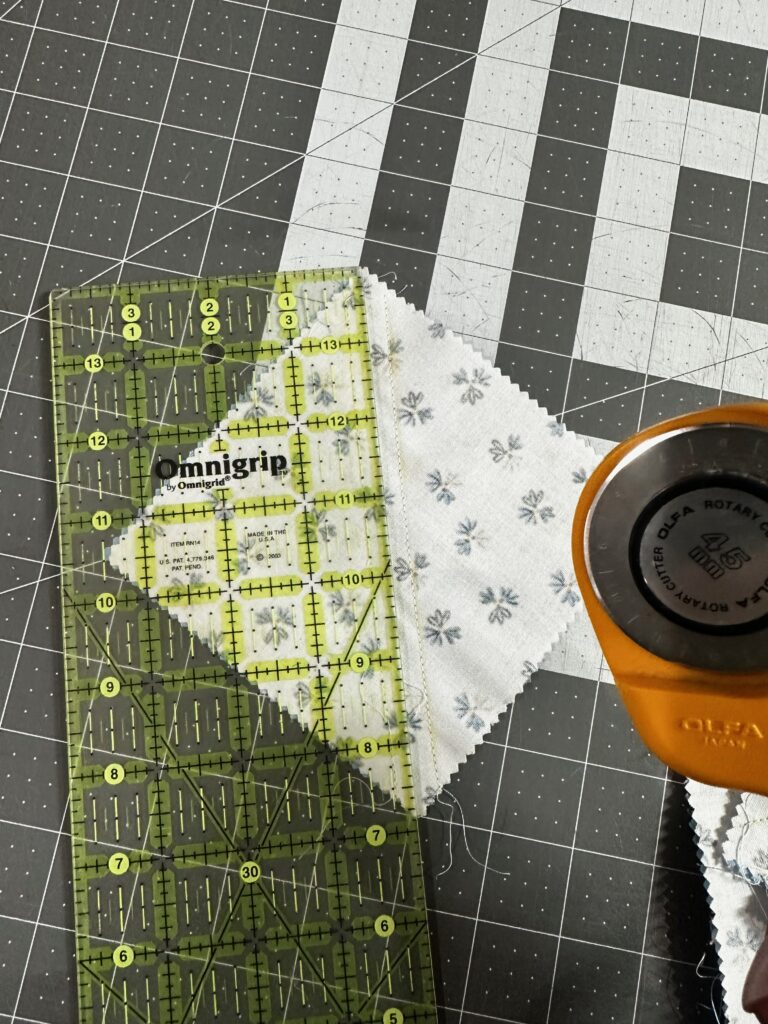
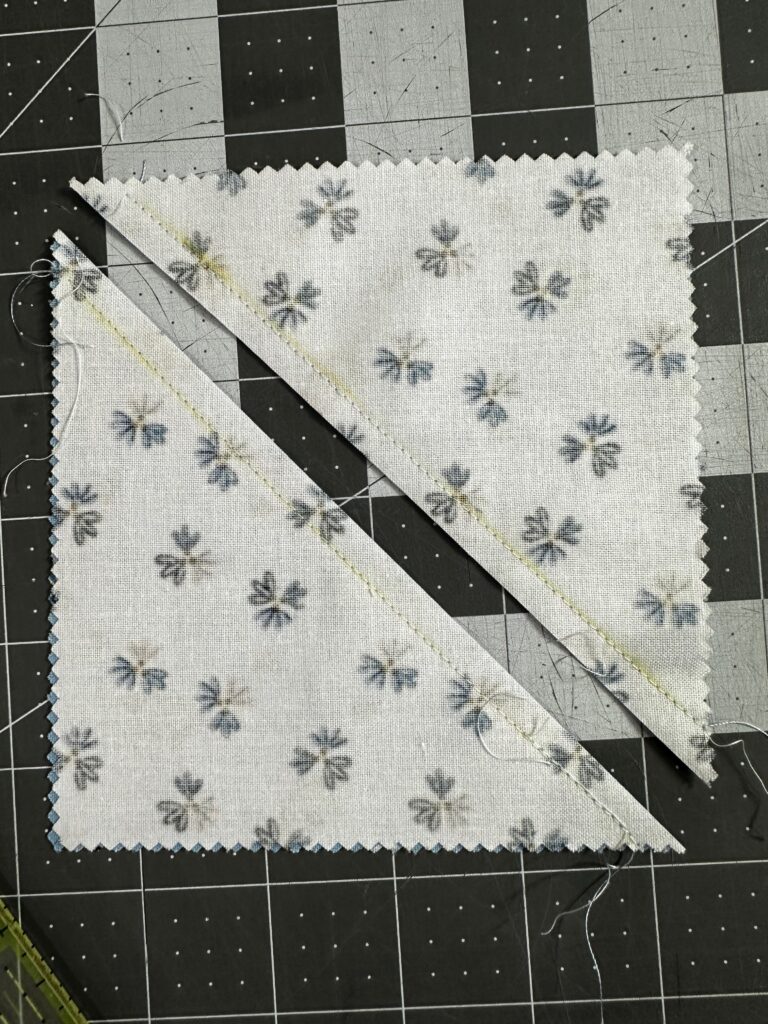
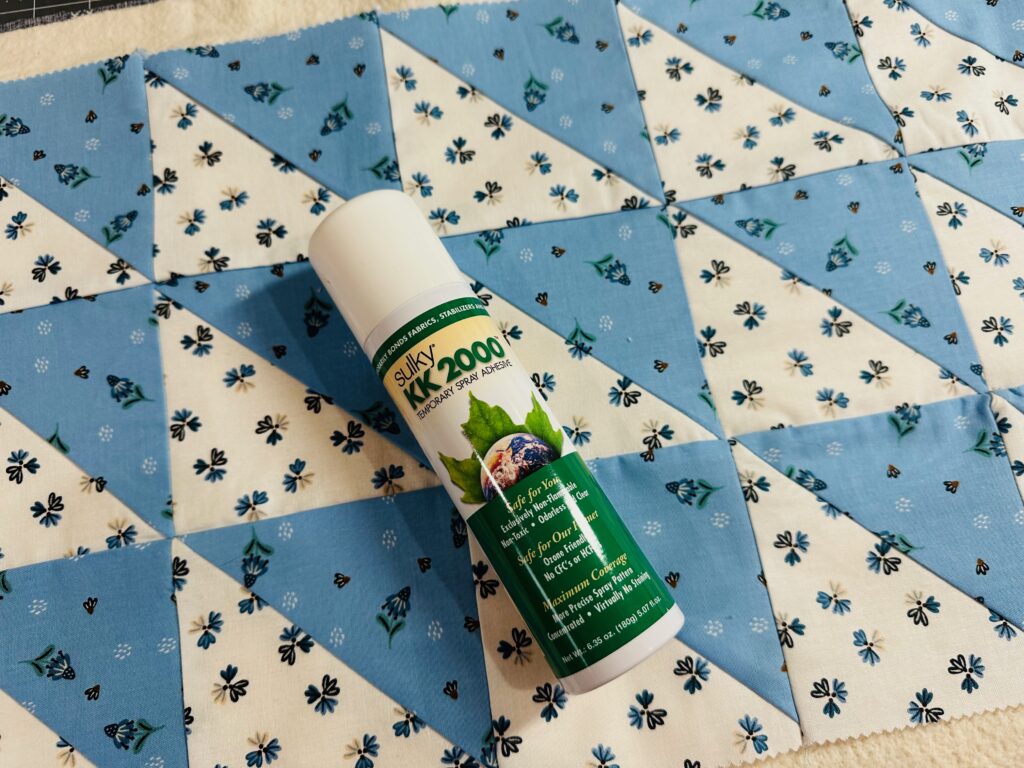
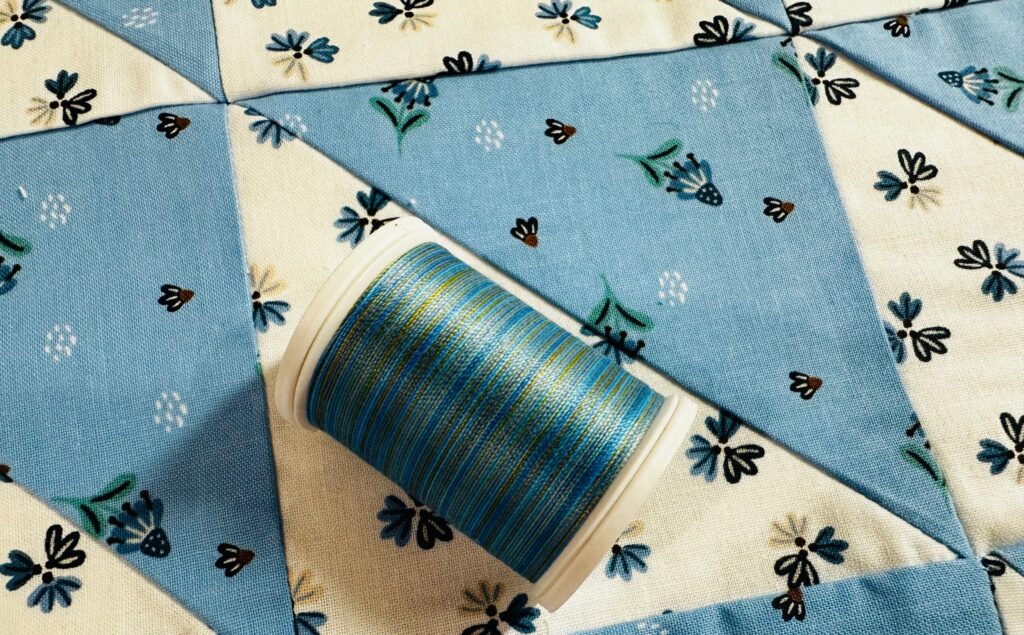
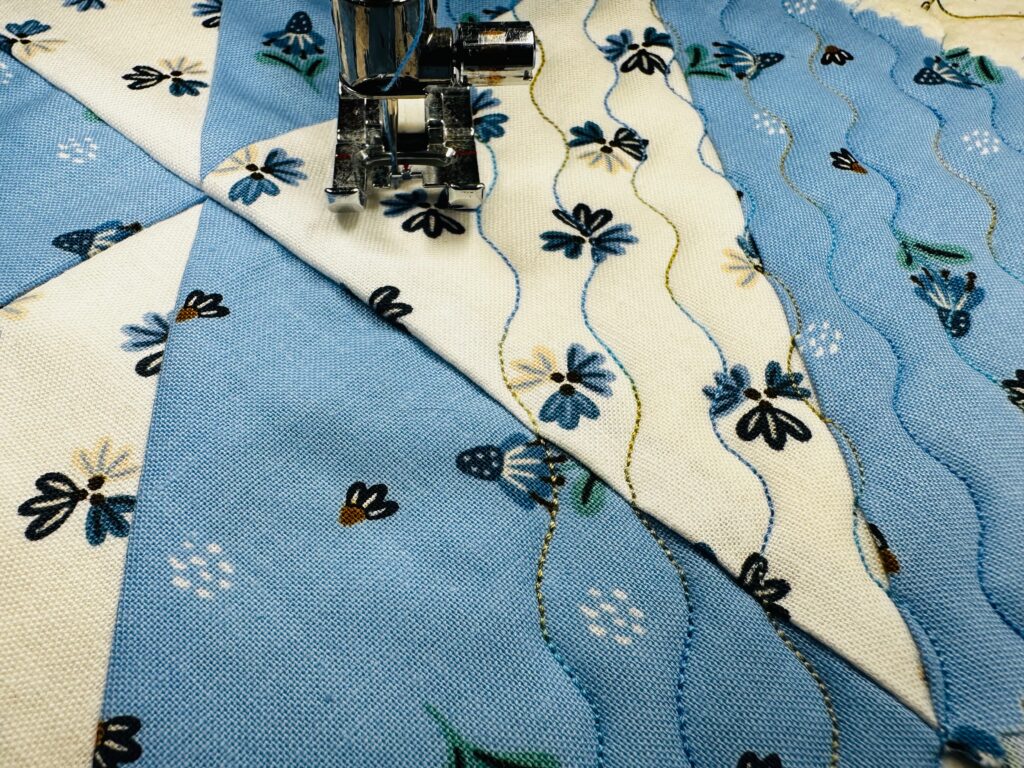
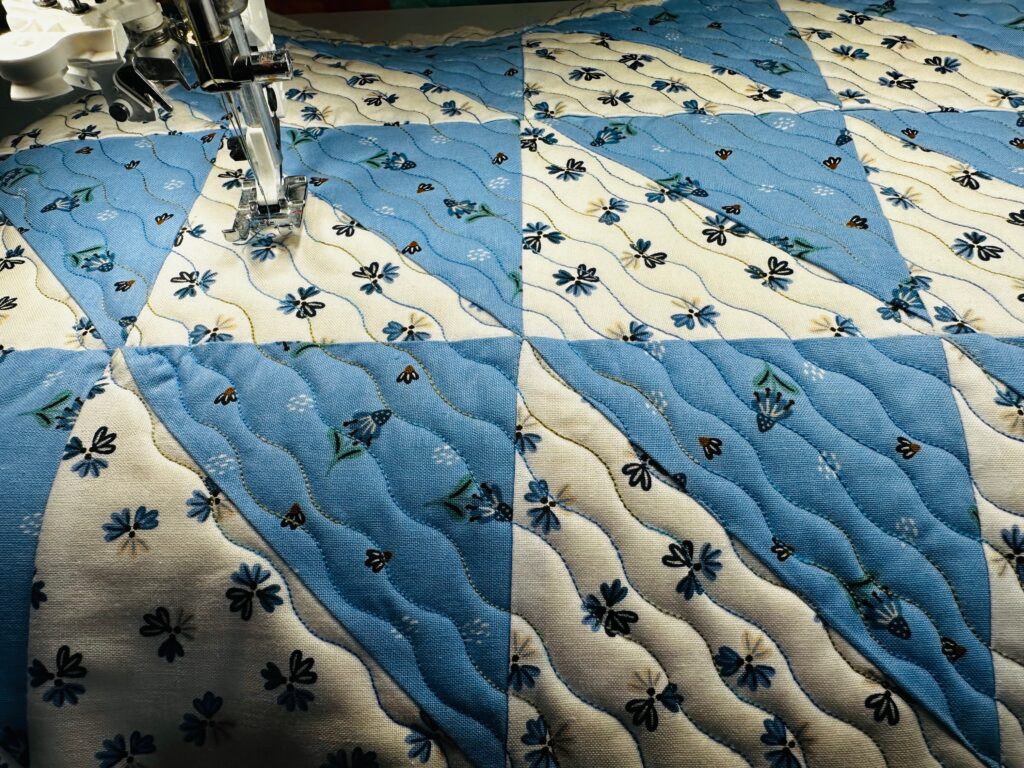
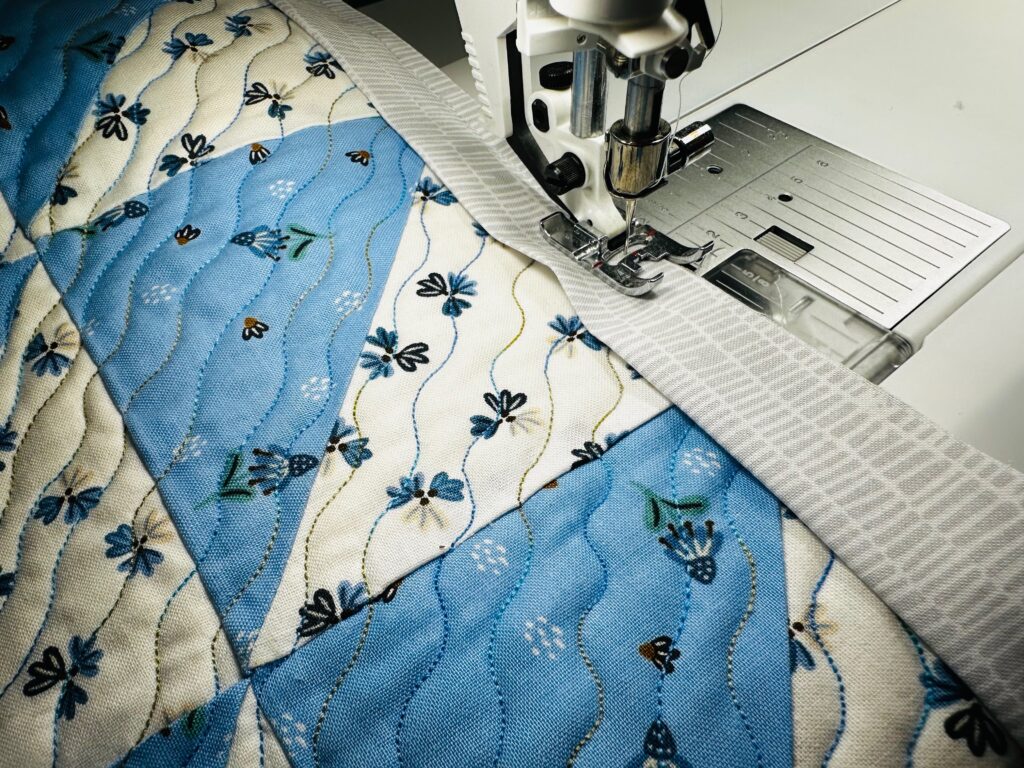
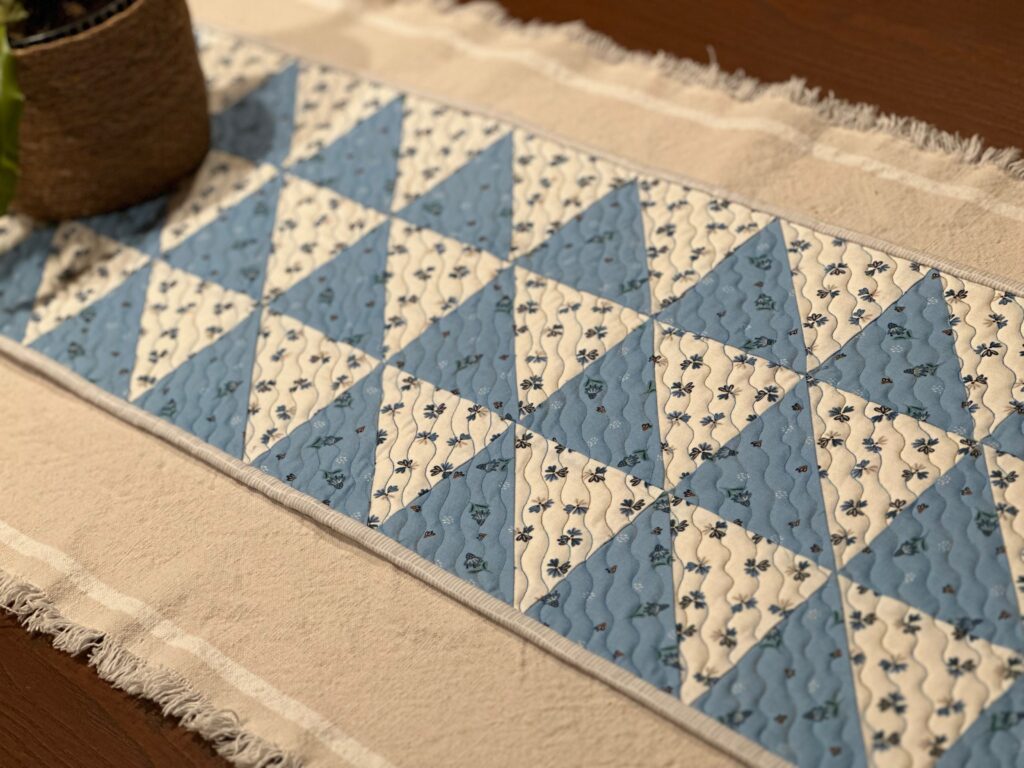

Beautiful and educational. Thank you, Ellen!
Love this, and all the tips I find on Sulky. Curious, if anyone else has issues saving the information as a PDF or printing, using the icons above. I use a Mac and “Print Friendly” app doesn’t work well with Mac. TIA
Beautiful a must try